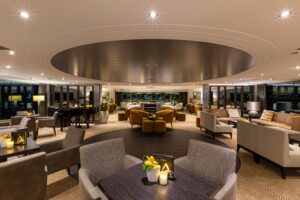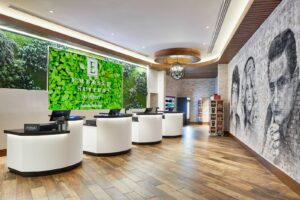Most theme parks endeavor to pull you out of reality and into a world of fantasy. However, Disney’s Animal Kingdom at Walt Disney World seeks to do exactly the opposite.
Not only were several of Animal Kingdom’s lands and attractions built to resemble real-life African and Asian destinations. The park was also designed to educate guests on their relationship to nature and inspire them to leave a lasting impact on the environment.
That’s a tall order, considering most people visit a theme park for rides and character meet-and-greets. A dedicated team of specialists works closely with the animals who call Disney World “home.” This allows guests to engage with animals in meaningful ways that will stick with them long after they return to the real world.
TPG recently spoke with Disney’s Dr. Scott Terrell and Dr. Zak Gezon, two such animal care experts, to learn how they tackle the extraordinary task of caring for animals at The Most Magical Place on Earth.
Related: Tips for visiting Disney World: 19 ways to save money and have more fun
By the numbers
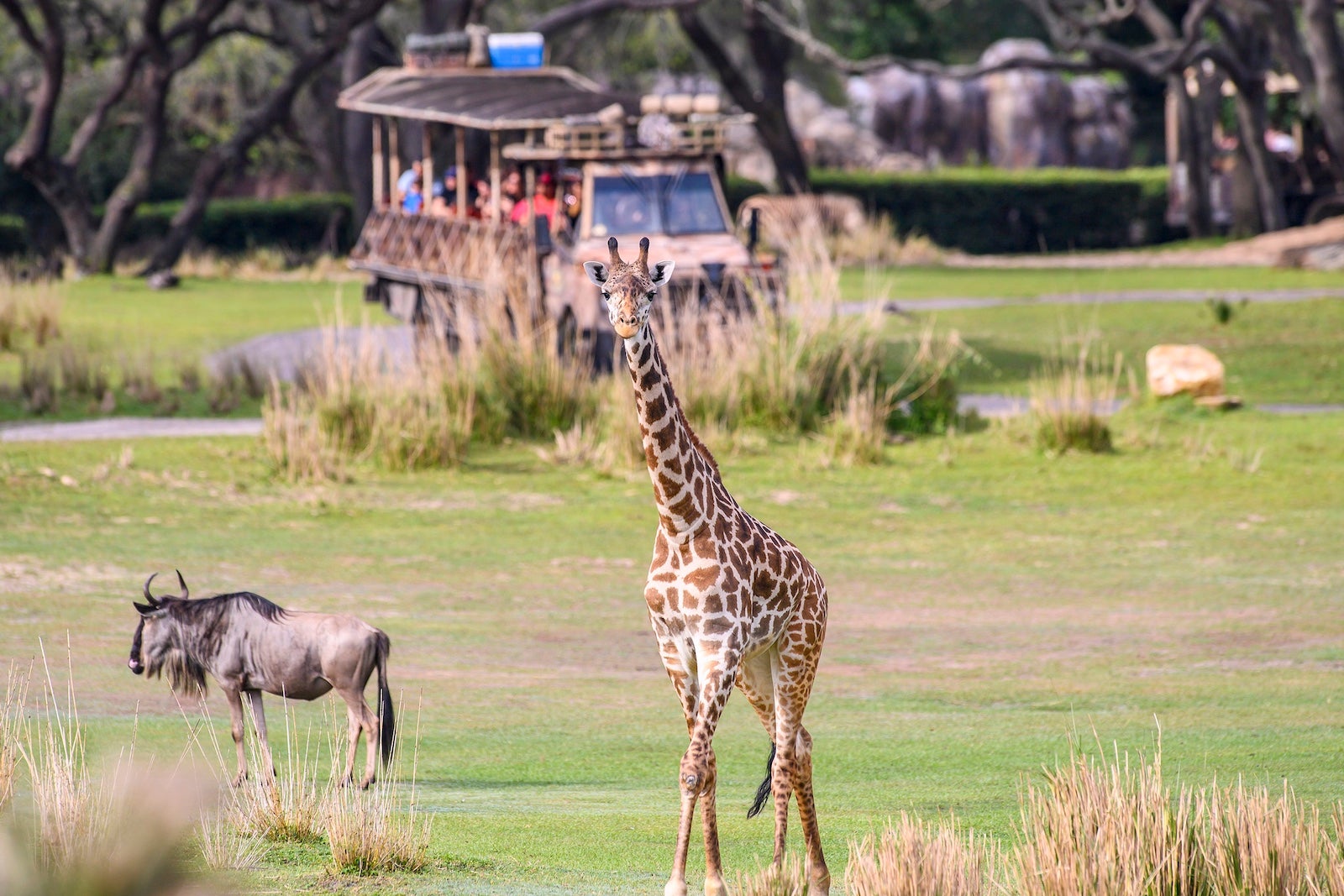
Open since April 22, 1998, Disney’s Animal Kingdom is Disney World’s newest and largest theme park. The park spans 500 acres, with 110 acres alone — the equivalent of 83 football fields — dedicated to one of its most popular attractions: Kilimanjaro Safaris.

Disney is currently home to more than 5,000 animals from 300 unique species. Most of those animals reside at Animal Kingdom, but some live in other parts of the resort, such as Disney’s Animal Kingdom Lodge, The Seas with Nemo & Friends pavilion at Epcot and Tri-Circle-D Ranch at The Campsites at Disney’s Fort Wilderness Resort. Of those, about 45 animals have lived at the park since before its opening on Earth Day in 1998.
Some — like the bees, birds, butterflies and other pollinators Disney supports through its conservation efforts — are simply too numerous to count.
Care and feeding
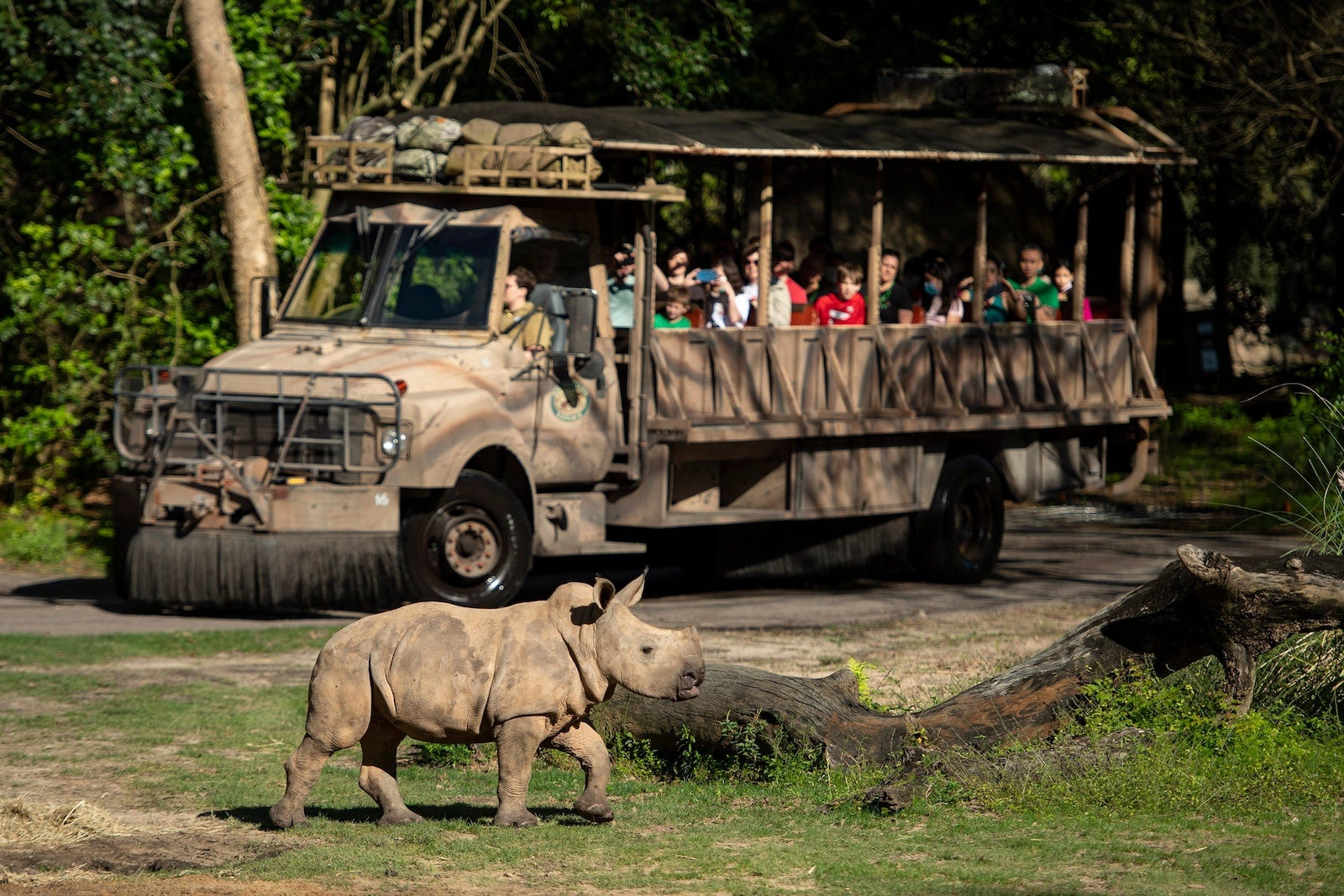
Disney’s Animal Kingdom is an accredited member of the Association of Zoos & Aquariums, but caring for several thousand animals that live in a theme park presents unique challenges.
“At Disney, we are surrounded by entertainment and attractions, but every cast member in the park understands that animal care comes first,” Terrell told TPG.
Like other accredited zoos and aquariums, Disney has scientists who specialize in animal behavior, health and nutrition. They also understand how things like light, sound and temperature affect the animals.
“We use real data to make sure the animals are happy, healthy and comfortable so they have the ability to thrive in our care,” Terrell said.
Related: More rides and fewer crowds: What to expect at Disney After Hours
Animal Kingdom’s hours of operation provide the most obvious example of how Disney prioritizes animal care. While most Disney parks remain open until 9 or 10 p.m. (and sometimes later), Animal Kingdom typically closes by 7 p.m. so cast members have time to care for the animals properly. This also means animals can have a quiet, restful evening without being disrupted by guests.
There are also no fireworks at Animal Kingdom for the animals’ sake. If you have ever been around a skittish animal during Fourth of July fireworks, you know just how important this is.
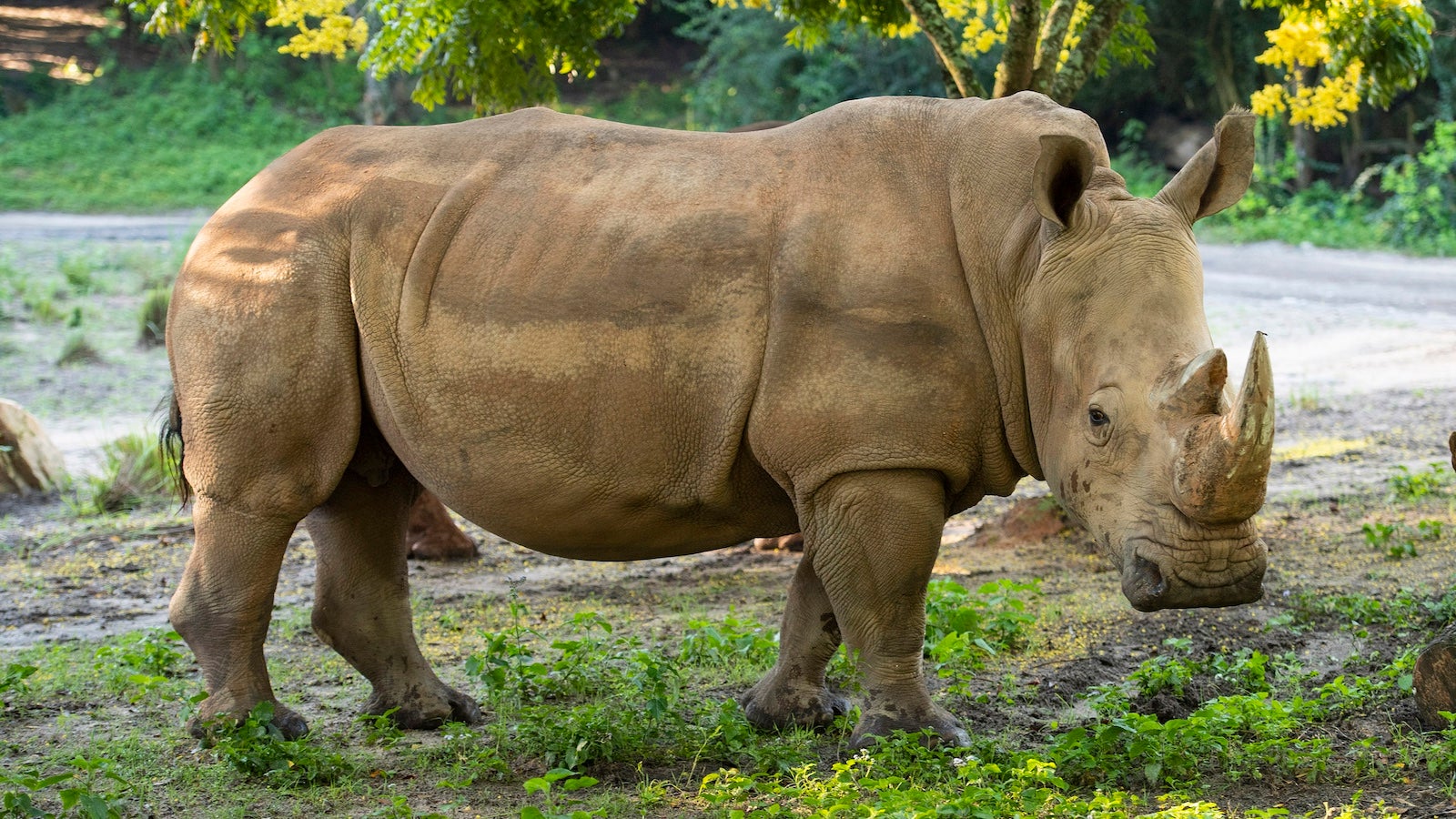
Disney utilizes the latest technology to provide the best care for its animals. Two years ago, Disney shared that some of the rhinos on Kilimanjaro Safaris wear fitness trackers around their legs, but they aren’t trying to get their 10,000 steps in. Disney’s animal care specialists use the data from the fitness trackers to study how far and fast the animals move each day, as well as their napping and sleeping schedules. The trackers are also GPS-enabled, so Disney can see exactly where they like to hang out on the savanna.
This year, Disney revealed how the Animal Kingdom staff monitors the breeding and feeding behavior of the park’s more than 100 Northern carmine bee-eater birds. Scientists use small radio frequency identification tracking devices to keep tabs on how often the birds enter their feeding area in search of tasty insects so they can properly supplement their diets.
Of course, the park’s sheer size is also a factor. Millions of guests visit Disney World every year — far more than any other zoo or aquarium.
“Providing world-class care for these animals is our number one priority, but we also have the opportunity to inspire millions of people, which is pretty awesome,” Terrell said.

Of the 300-plus cast members who care for Disney’s animals daily, about 40 of them are responsible for creating, preparing and monitoring meals for both the zoo and aquarium animals at Disney’s Animal Nutrition Center. In fact, Disney’s is one of the few aquariums with a dedicated aquarium nutritionist on staff.
“We prepare about 1,200 individual meals daily,” Terrell said. “That’s more than 10,000 pounds of food every single day.”
If you are picturing the boring bowls of food you see in pet food commercials, think again.
“What many people might be surprised about is that we feed our animals the same ingredients we feed our guests,” Terrell added.
Feeding Disney’s animals the right food in the right amounts is very important. The Animal Nutrition team monitors their intake so closely that they know within 2 grams what the animals eat on a daily basis.
Related: The 21 most underrated things at Disney World: What to see, do and eat that many guests miss
The team also feeds the animals a varied diet. The staffers introduce different spices or scents regularly, but they also love celebrating the animals on special occasions. When an animal celebrates a birthday, for example, the Animal Nutrition team might prepare a special meal like a cake made of fruit and vegetables.
“We know that nutrition is important to be healthy, happy and comfortable, and celebrating our animals helps them and their caretakers thrive,” Terrell said.
Next time you visit Animal Kingdom, you can see Disney’s Animal Nutrition team in action at Rafiki’s Planet Watch. Look for the Nutrition Center window inside the Conservation Station; you can watch handlers prepare healthy meals for Disney’s animals right before your eyes and see examples of the types of meals they feast on.
At Epcot, you can watch the animal care experts feed fish, sea turtles and other aquatic animals at The Seas with Nemo & Friends pavilion.
The doctor is in
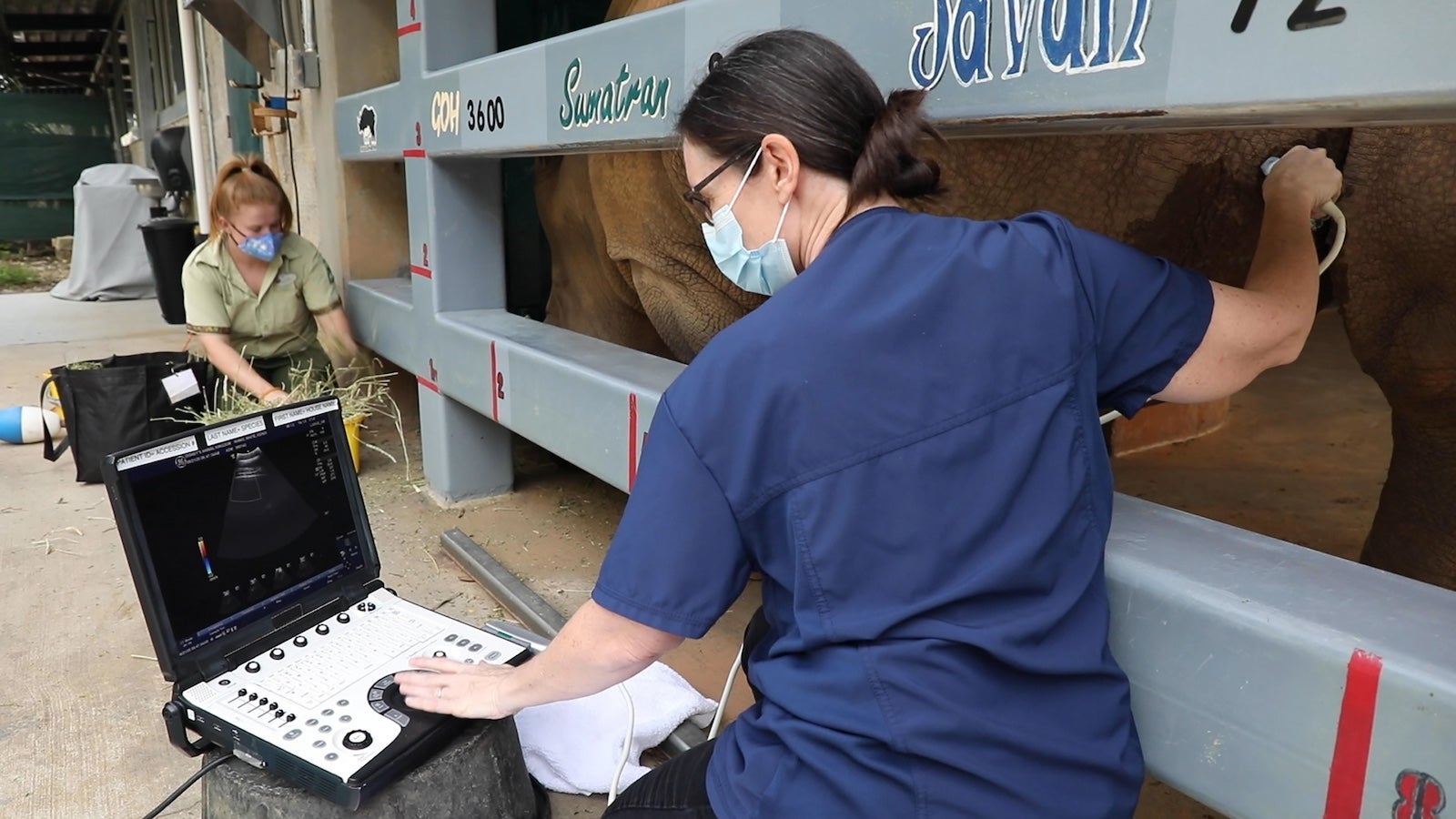
You can’t exactly put an elephant in the car when it’s time for a checkup. Luckily, Disney’s doctors make house calls and can do everything from X-rays to ultrasounds. Disney employs almost a dozen veterinarians, including Terrell, who have training in a variety of zoological specialties.
“Here at Disney, we’re able to do just about anything that any medical professional or veterinarian could do,” Terrell said. “We have the ability to do things like PET scans, X-rays, surgery and lab work on-site.”
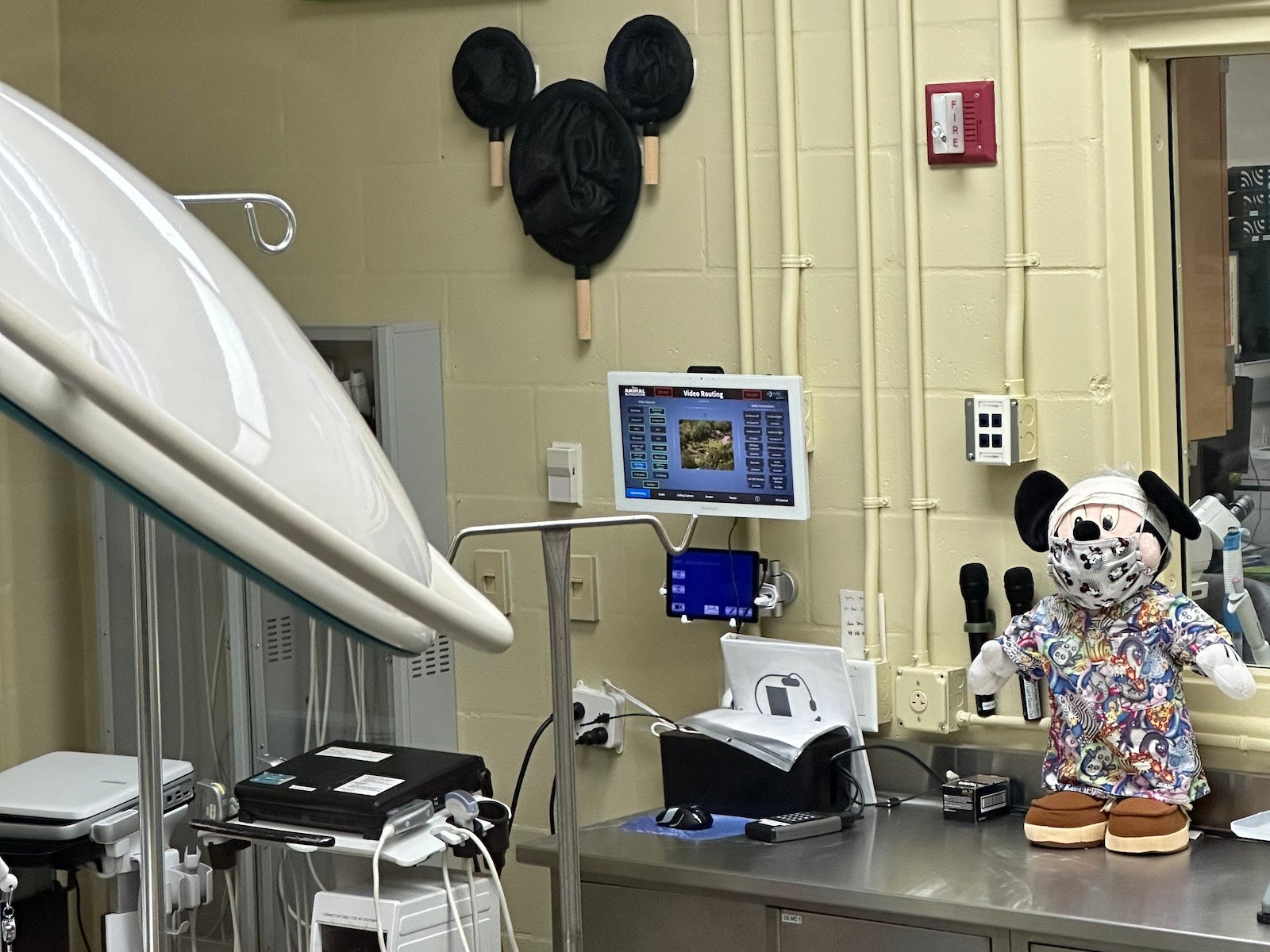
In December 2023, Disney welcomed a 218-pound baby African elephant named Corra into the world. Guests can now see Corra roaming the savanna when they ride Kilimanjaro Safaris. African elephants are an endangered species, and it took careful planning and monitoring to ensure Corra and her mom, Nadirah, had a healthy birth and bonding experience.
Disney’s veterinary team provided Nadirah with prenatal care that included regular ultrasounds and a few extra treats like sweet potatoes, carrots and hay to keep her happy during her checkups. They also measured the calf’s weight and checked the mom’s weight and hormones daily as the big day approached.
More recently, in March, Disney welcomed a baby addax named Julien to the herd. You may catch a glimpse of Julien roaming the grounds at Disney’s Animal Kingdom Lodge. The addax is a species of antelope that is critically endangered in the wild but has the opportunity to thrive thanks to Disney’s expert care.
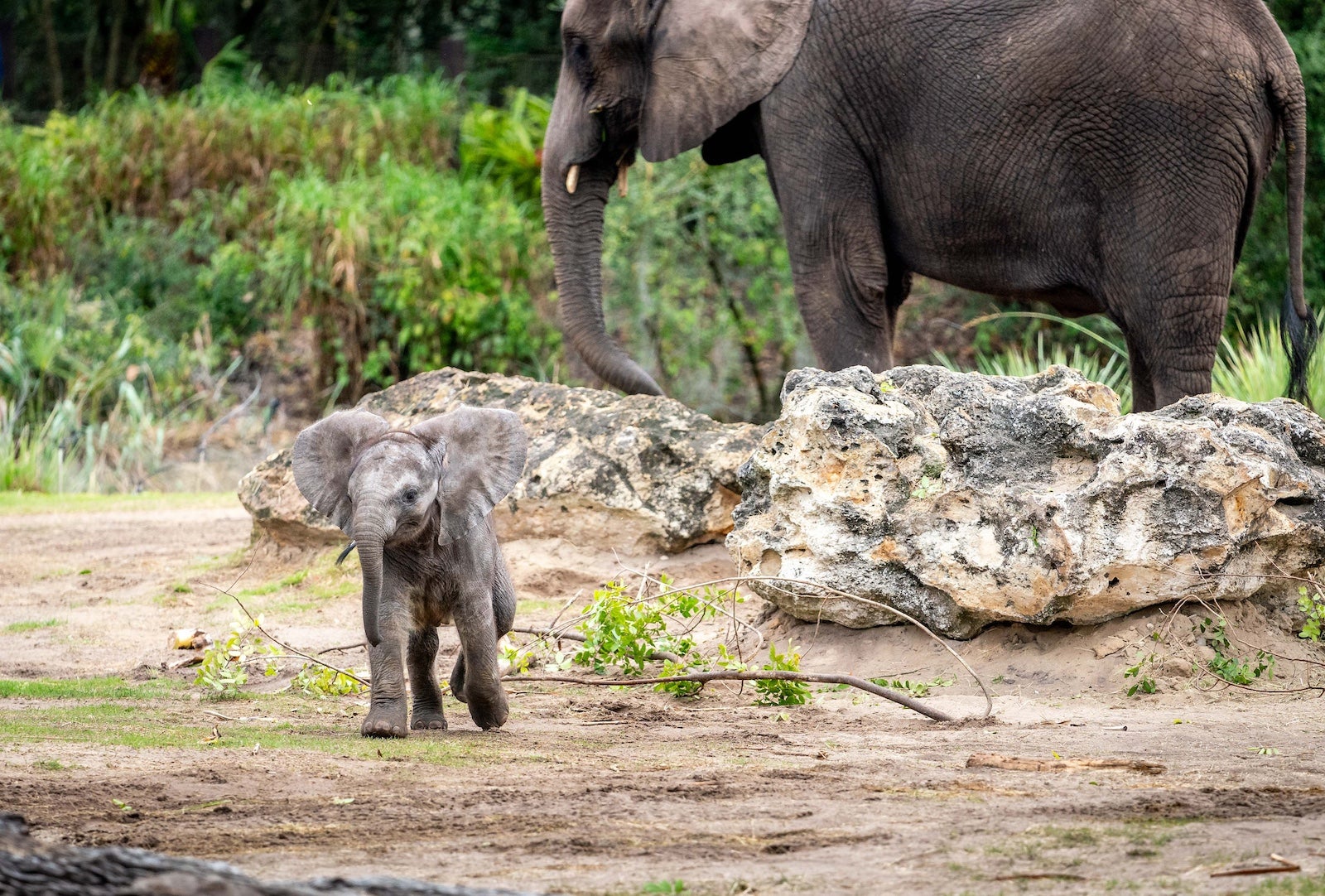
Disney collaborates with the AZA’s Species Survival Plan program, which helps to promote safe and healthy breeding of certain endangered and threatened species to increase populations and ensure their survival. In addition to Corra and Julien, Disney has overseen the births of other species in their care — such as Sumatran tigers, western lowland gorillas, cotton-top tamarinds and okapi — through the SSP.
Disney also performs routine veterinary services for its residents, many of which you can observe when you visit the park.
“The really unique thing about our veterinary program is that we perform most of our medical procedures right in front of our guests,” Terrell said. “We are extremely transparent with our guests about the level of care that the animals receive. To date, we’ve performed more than 26,000 medical procedures in front of our guests.”
Next time you visit Rafiki’s Planet Watch, you can peek into the window of the veterinary treatment room inside the Conservation Station building. You’ll see a screen with that day’s schedule, which could include anything from a CT scan to an injury treatment to a dental exam and cleaning.
Disney’s global impact
Disney’s commitment to conservation extends far beyond welcoming little bundles of joy into the world. It even extends beyond Walt Disney World’s gates.
“We want to be good stewards of the environment for the animals that are outside of our care, as well,” Gezon told TPG.
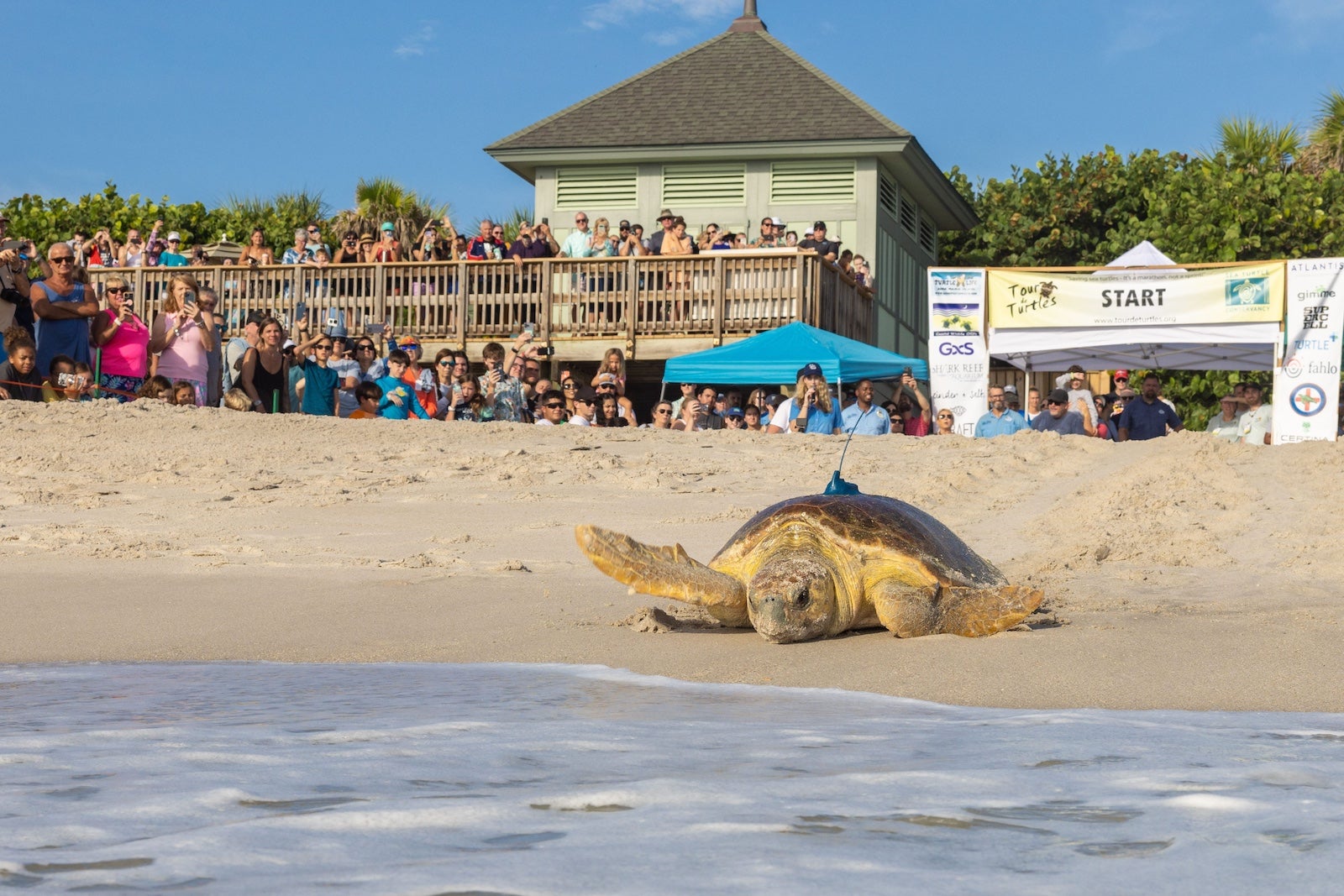
Over the past 20 years, Disney has documented more than 1 million sea turtle hatchlings emerging from their eggs and making the trek to the ocean.
“Endangered sea turtles are nesting right now on the beach in front of Disney’s Vero Beach Resort, and we have a dedicated team that is there every single day during the breeding season,” Gezon said.
Some of the animals Disney is trying to protect, like the purple martins, visit the parks but are free to come and go as they please. These migratory birds make the 6,000-mile journey to the Brazilian rainforest and back every year. During their time in Central Florida, Disney installs purple martin birdhouses all over the property; each has several nesting compartments where the birds can find mates, lay eggs and care for their chicks until they can fly on their own.
“We are doing all sorts of cutting-edge research, like putting solar-powered GPS tracking units on some of the birds so we can learn about their migration patterns,” Gezon said.
Disney can use this information to monitor and care for these animals better when they visit Disney and when they return to South America. Last year, more than 1,000 chicks hatched at Disney World — an all-time record for the purple martin program.
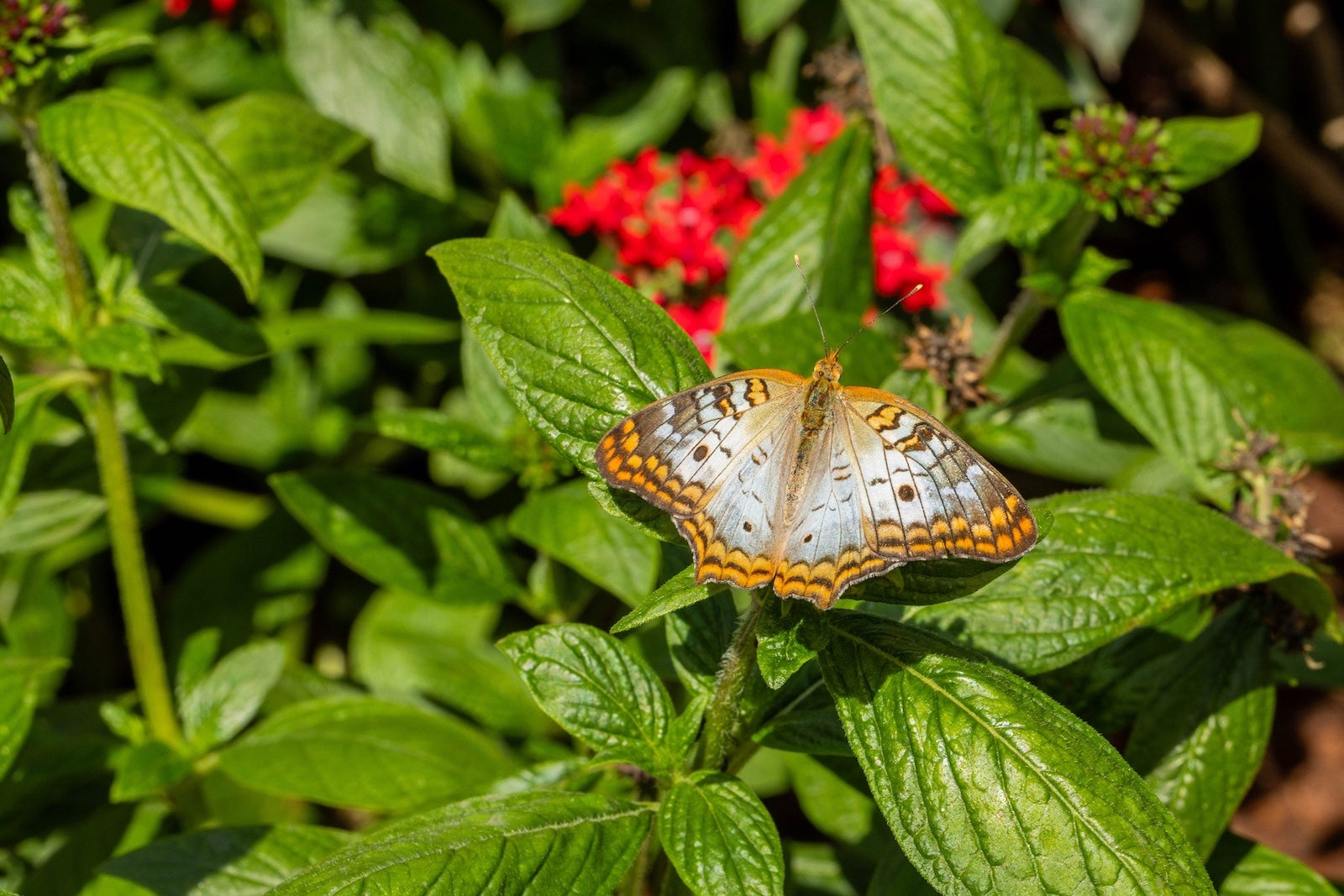
Several pollinator populations worldwide are declining due to habitat loss, and Disney is doing everything possible to protect pollinators.
“We were a founding member of the Florida Butterfly Monitoring Network in 2004. We’ve documented over a hundred pollinating insect species across our property. We really want to do the absolute best job we can to take care of the environment, whether that’s animals in our care or outside of our care,” Gezon said.
In fact, Gezon likes to think of Disney as one giant pollinator garden.
“It’s a whole thriving metropolis of nature, and it’s because we’ve gone in there intentionally and tried to make this space,” Gezon said.
Next time you visit Disney World, take a moment to stop and look around. The bees, butterflies, birds and other insects you see are not there by accident. Your best bets for spotting pollinators are at Rafiki’s Planet Watch and around the specially designed flower gardens at Disney parks and resort hotels.
A call to action
Guests can learn about animals and environments from across the globe at Disney, especially by participating in free activities like the Wilderness Explorers program at Disney’s Animal Kingdom or the Finding Dory’s Friends scavenger hunt at Epcot’s The Seas with Nemo & Friends. However, Gezon and Terrell hope your vacation is just the spark that ignites a lifelong passion for protecting the environment.
“I really want people to be inspired by nature and feel empowered that they can make an impact when they leave here. If people go home inspired and tell their friends about it, even small actions can add up and create a lasting impact on our entire planet,” Gezon said.
“We are a company that believes in hope and magic. If we can inspire that same belief in our guests, the collective impact can, without a doubt, change the world,” Terrell added.

That change can start in your own backyard. Gezon and Terrell gave several examples that most of us can easily integrate into our daily lives. Actions such as turning off the water when you brush your teeth, planting a pollinator garden in your yard or recycling your old cellphones are more significant than they seem; this is especially true when you spread the word to your friends and family so they can pitch in, too.
“There are so many ways to be inspired by nature and have an amazing time while you are doing it,” Gezon said.
At Disney, education feels like you are just having fun with your friends and family. However, you can take what you learn and make the world a better place for all its inhabitants, no matter how big or small. After all, we are all connected in the great Circle of Life.
Related reading:


